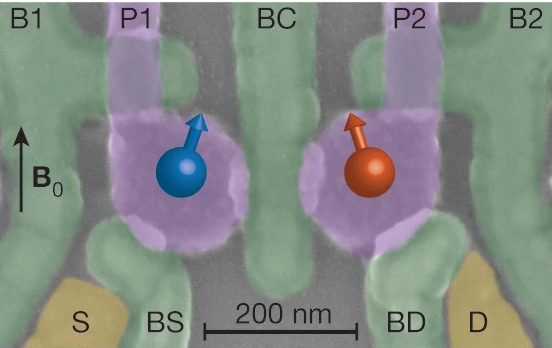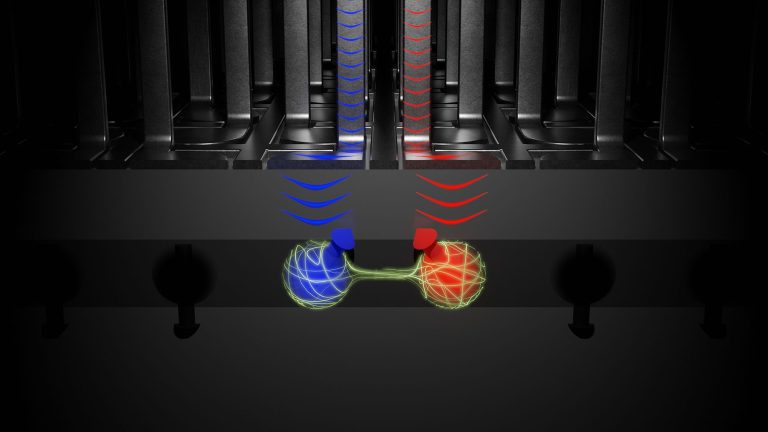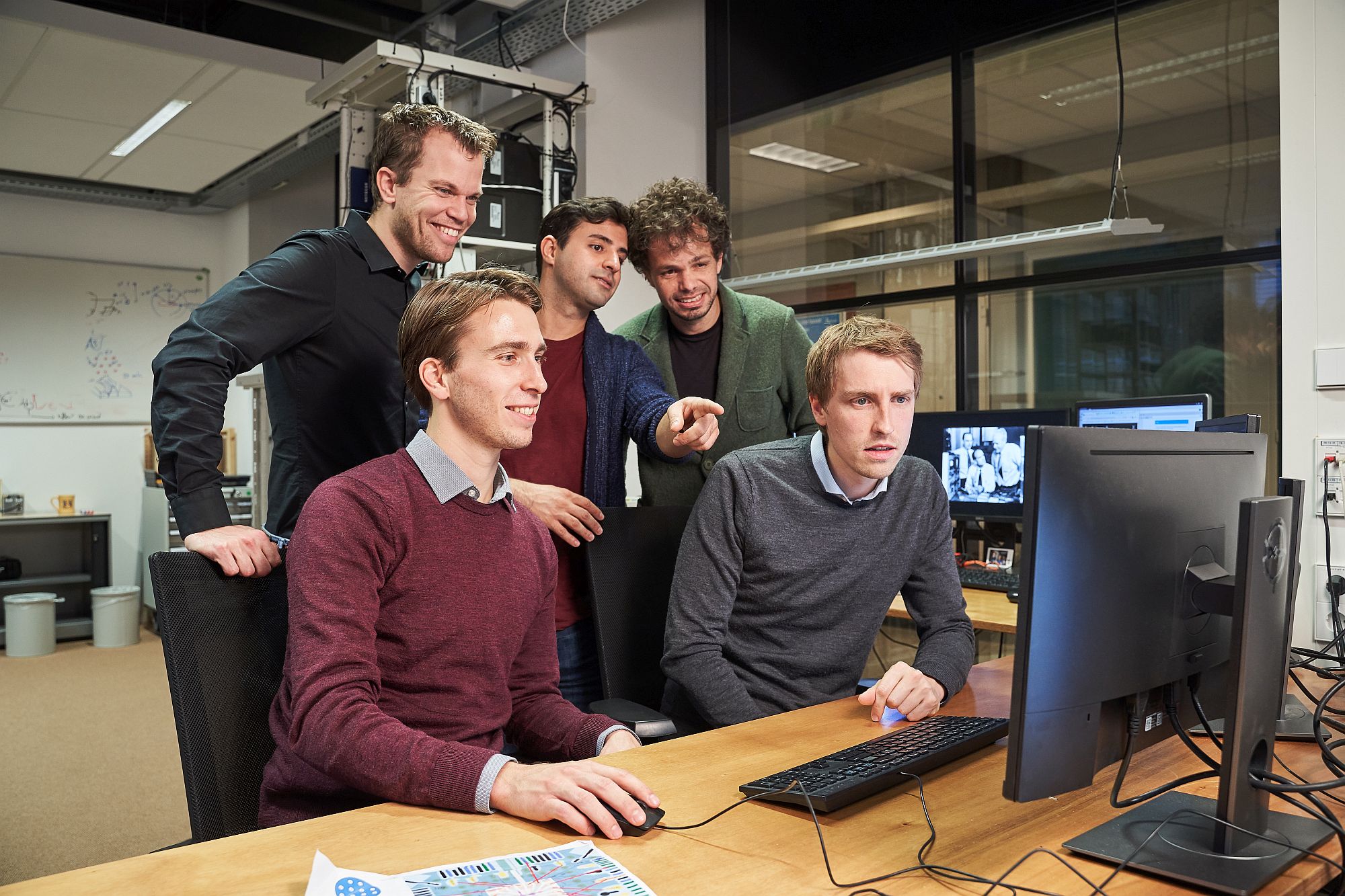In the semiconducting industry, germanium was long regarded as silicon’s ugly little sister. But it is now on the rebound with promising qualities for building quantum bits.
The QuTech research team. Standing: Menno Veldhorst - Amir Sammak - Giordano Scappucci; Sitting: Nico Hendrickx - David Franke (Photo: Ernst de Groot)
Silicon has become the world standard material for the fabrication of computer chips. The choice was made after the invention of the transistor in the late 1940s, at the dawn of the information age. “Silicon became the leading material in the semiconductor industry over germanium, mainly because its oxide is of better quality”, explains group leader Dr Menno Veldhorst.
Interest in germanium was awakened in the qubit research community since theory predicted that germanium spin qubits would not need additional elements on top of the wafer, as silicon does. In the light of mass production of qubits, that is a very attractive property. “This provides an advantage when scaling up to larger numbers of qubits”, says Dr Nico Hendrickx, first author of the recent Nature article on the demonstration of qubits in germanium.
 Processed EM photo from two-bit germanium qubit (Photo: QuTech)
Processed EM photo from two-bit germanium qubit (Photo: QuTech)Researchers at QuTech, a collaboration of TU Delft and TNO, were able to grow the germanium structures that were used in the experiments. They circumvented the former problem of the low-quality germanium oxide by sandwiching the pure germanium between two layers of silicon-germanium.
 qubit interaction (Illustration: QuTech)
qubit interaction (Illustration: QuTech)In silicon, the qubit is typically defined by the spin state (up or down) of an electron. In germanium, the spin state of a ‘hole’ -or the absence of an electron- represents the quantum bit. “Conceptually, it may be harder to imagine, but the hole is just as real as an electron”, Hendrickx explains.
The authors demonstrated both single and two-qubit interactions, which together form the basis that allows performing all calculations. The experiments show that the fidelity of the single qubits is over 99% – the industry threshold for the application of error correction.
Those qualities, plus its independence of additional elements, make germanium a very promising candidate material for mass production of qubits. Or, as the authors say: ‘The demonstration of a universal gate set with all-electrical control and without the need of any microscopic structures offers good prospects to scale up spin qubits using holes in strained germanium.’
After the article appeared, reactions from other labs came in. Hendrickx estimates that 10 other labs are now jumping on the germanium bandwagon.
- N. W. Hendrickx, D.P. Franke, A. Sammak, G. Scappucci and M. Veldhorst, Fast two-qubit logic with holes in germanium, Nature, 13 January 2020.
Do you have a question or comment about this article?
j.w.wassink@tudelft.nl


Comments are closed.